Species of Water-milfoil Family (Haloragaceae) Relevant for Ossipee Lake, New Hampshire
C. Barre Hellquist, Ph.D.
Massachusetts College of Liberal Arts, Professor Emeritus
Co-author of Aquatic and Wetland Plants of North America
Summer Resident of Ossipee Lake
C. Eric Hellquist, Ph.D.
State University of New York, Oswego, Associate Professor
Biological Sciences Department, Oswego, NY
September 2018
Ossipee Lake today suffers with the infestation of the variable water-milfoil, Myriophyllum heterophyllum. What most people don’t realize is that the lake also contains or has contained four species of water-milfoil (Myriophyllum) and two species of the closely related mermaid weed (Proserpinaca). These native species are becoming less abundant. Members of this family are characterized by having whorled or alternate leaves with fine leaflets off a central axis.
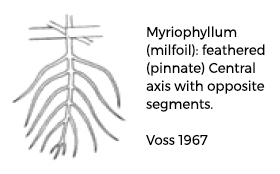
Eurasian watermilfoil, M. spicatum, is colonizing many lakes throughout the northeast and in some water-bodies in New Hampshire. As of 2018, M. spicatum is not in Ossipee Lake. It is extremely important that the lake access points be constantly monitored to prevent new populations of both variable and Eurasian watermilfoils from becoming established.
Below is a summary of the exotic and native members of the milfoil family (Haloragaceae) that are currently or historically known from Ossipee Lake, as well as one species (M. spicatum) that is a significant introduction concern.
1. VARIABLE WATER-MILFOIL, Myriophyllum heterophyllum
Exotic in New Hampshire. This species is native south and west of New England and considered exotic and invasive in New England. It has rapidly spread throughout the soft-water lakes of lower acidity in New England. In the Ossipee Lake system it is found widely spreading in the Danforth ponds, the bays, Pine River and downstream in the Ossipee River.
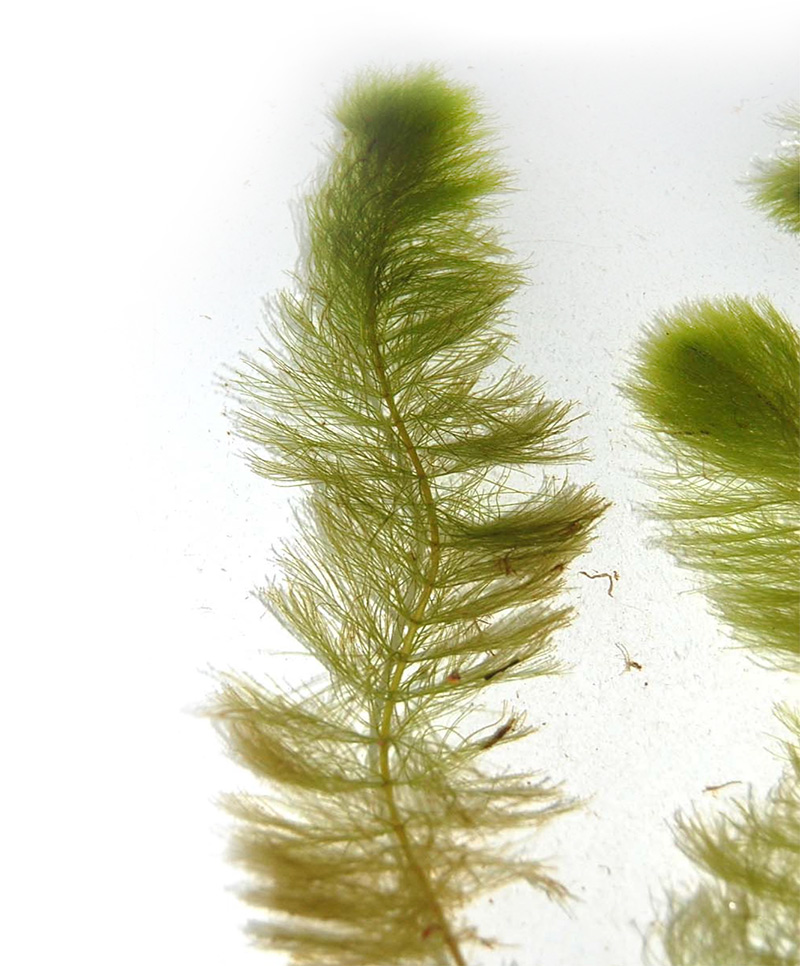
M. heterophyllum. Pine River
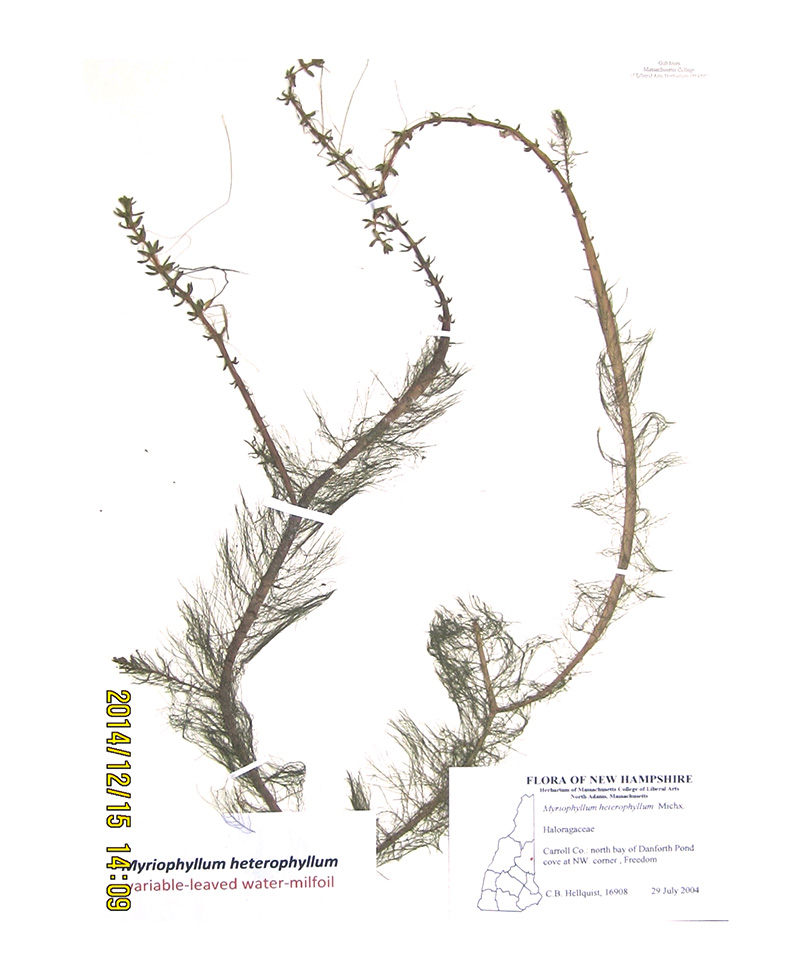
M. heterophyllum. Danforth Pond
Diagnostic characteristics:
- Attachment of leaves on the stem whorled for upper leaves, some lower leaves alternate
- Flowers and fruit extend beyond the base of large leaf-like bracts
- Leaves crowded along the stem creating a thick rope-like appearance underwater
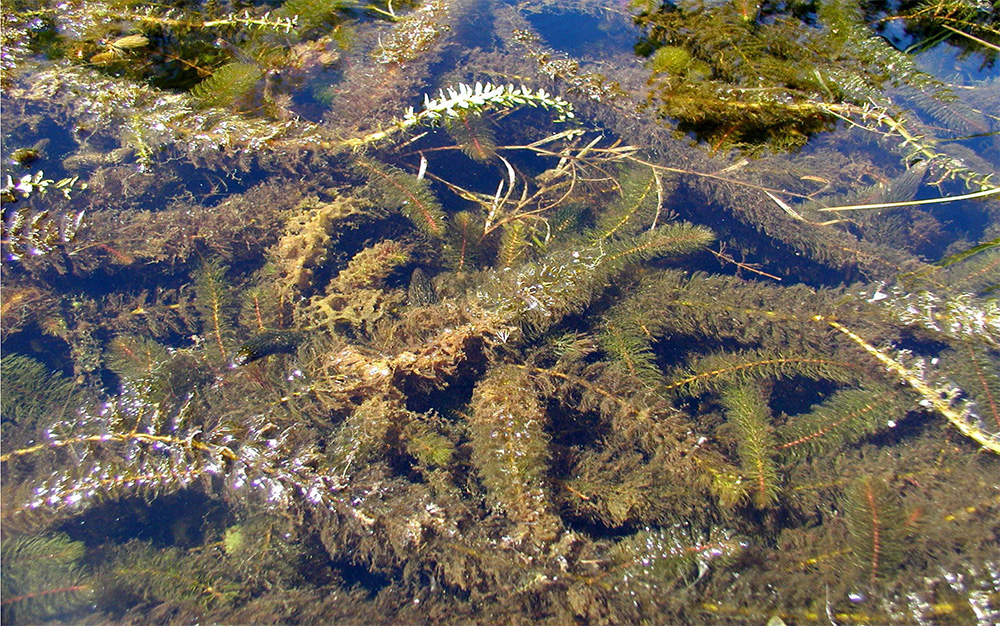
M. heterophyllum.Large emergent bracts at the tips of fertile branches.
2. FARWELL’S WATER-MILFOIL, Myriophyllum farwellii.
Native to New Hampshire. This species is confined to Upper Danforth Pond where it is now rare. It has previously been reported from Hoyt Brook above Danforth Pond, Hoyt Brook near the Ossipee Lake Marina, and at one location in Pine River.
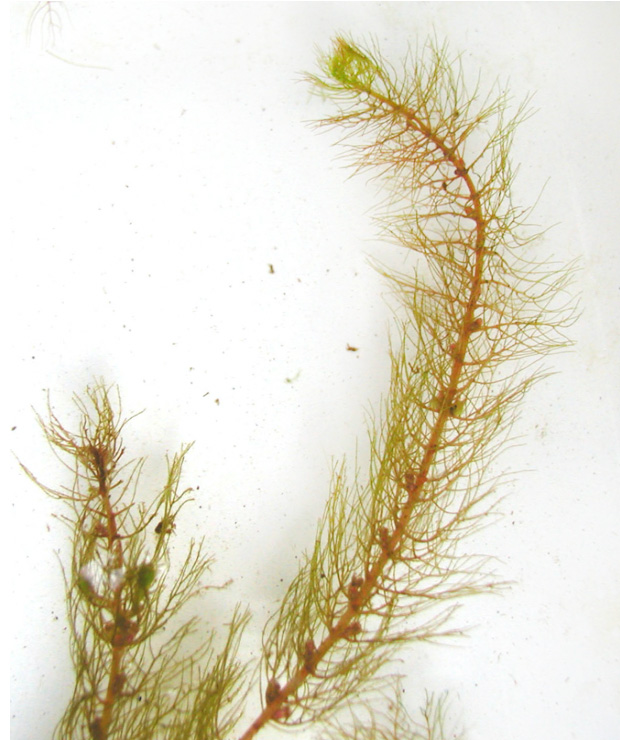
M. farwellii. Submersed axillary fruit
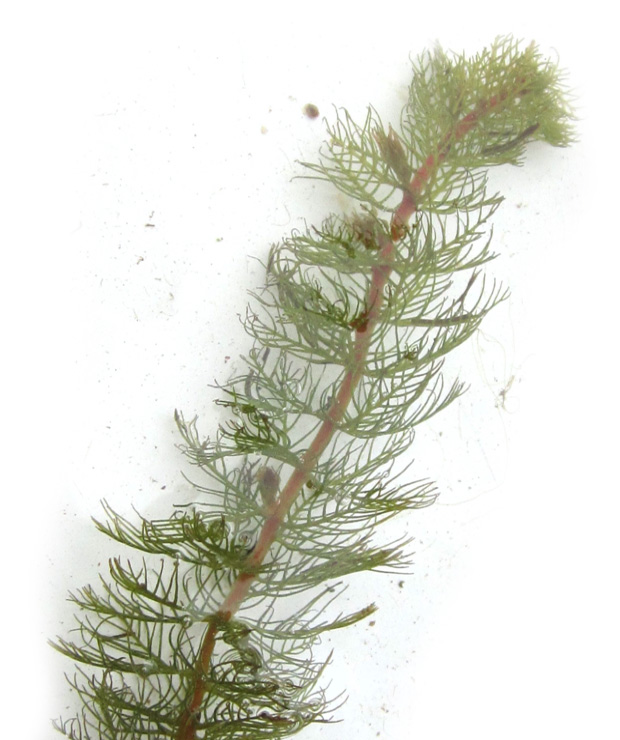
M. farwellii. Club-shaped lateral winter buds along stem
Diagnostic characteristics:
- Leaves are predominately alternate where they join the stem, especially on upper portions of the stem. (Compare with variable watermilfoil which is whorled/opposite on the upper stem.)
- Flowers and fruit are attached in the axils of the alternate leaves
- Club-shaped winter buds form laterally along the stem in late summer
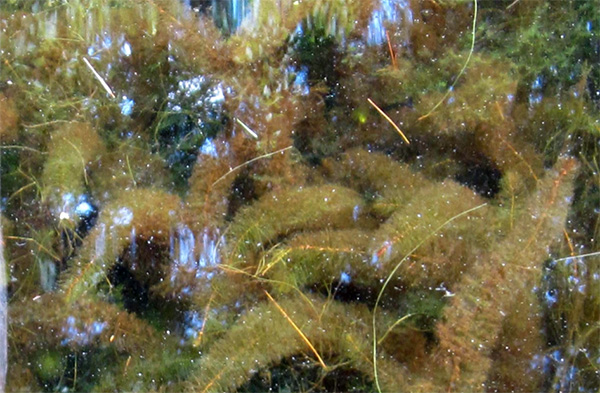
M. farwellii. Robust Bearcamp Pond population
3. ALTERNATE-FLOWERED WATERMILFOIL, Myriophyllum alterniflorum.
Native to New Hampshire. This is the second rare Myriophyllum in the Ossipee Lake system. Today it is only found in Upper Danforth Pond. In the late 1970s, it was found at the mouth of Hoyt Brook at Broad Bay.
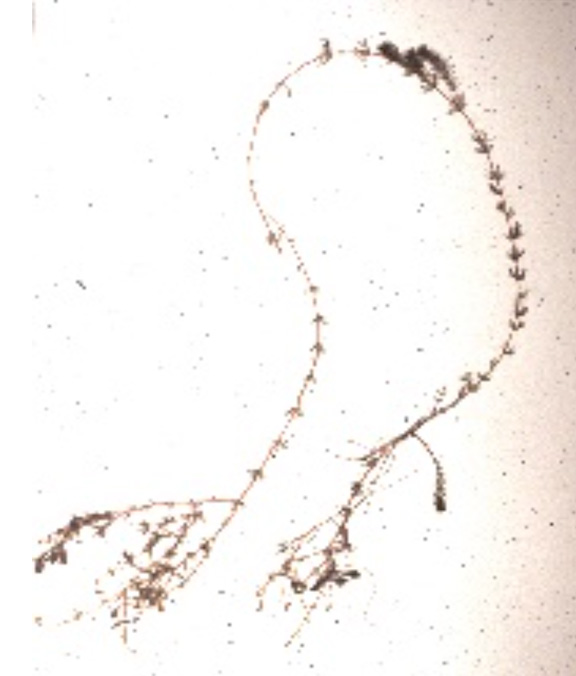
Plant with inflorescence
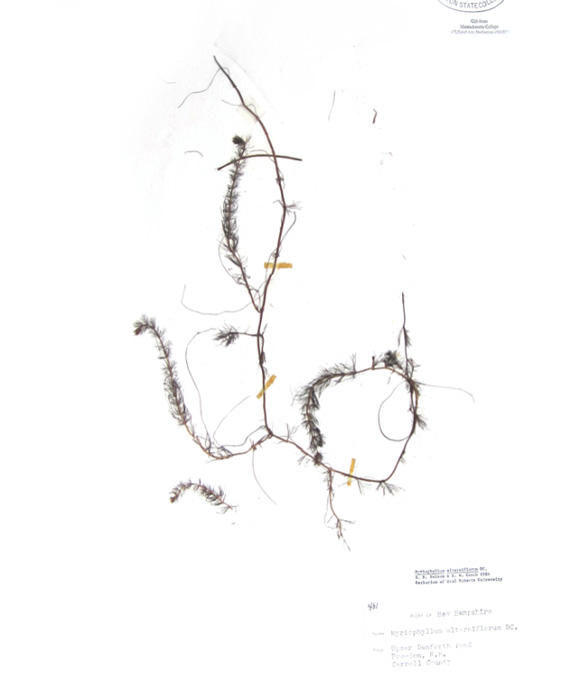
Upper Danforth Pond plant
Diagnostic characteristics:
- Leaves are whorled along the stem
- Flowers and fruits are emersed, attached in the leaf bases along the stem
- Total diameter of flowering stem much narrower than other species
- Leaves often reddish
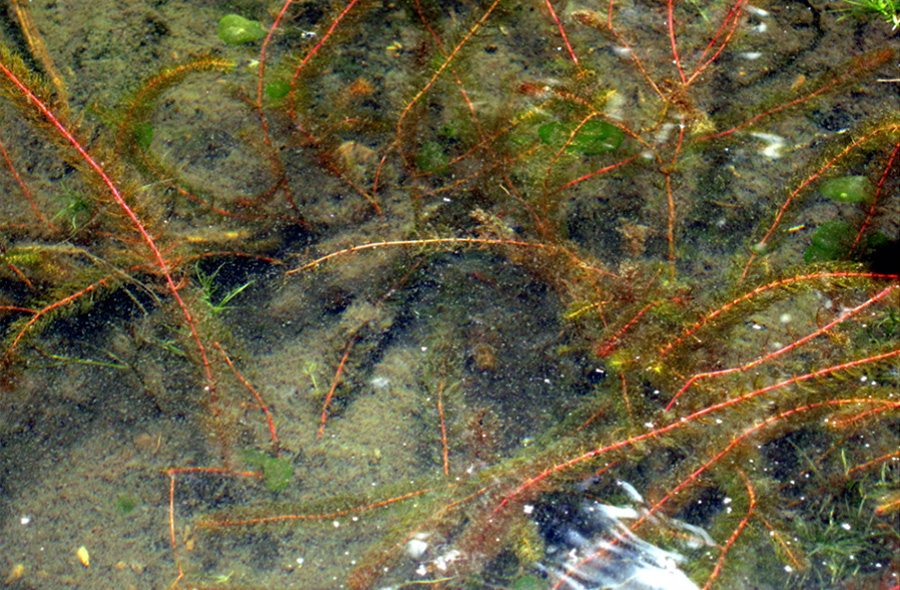
Note: Plant with red stems
4. SLENDER WATER-MILFOIL,Myriophyllum tenellum.
Native to New Hampshire. This is a common, inconspicuous water-milfoil found growing closely along lake sediments. It occurs as a small rhizomatous plant that grows linearly along sediments. Since it lacks distinct leaves it appears to be slender vertical stems poking out of sediments. It rarely flowers.
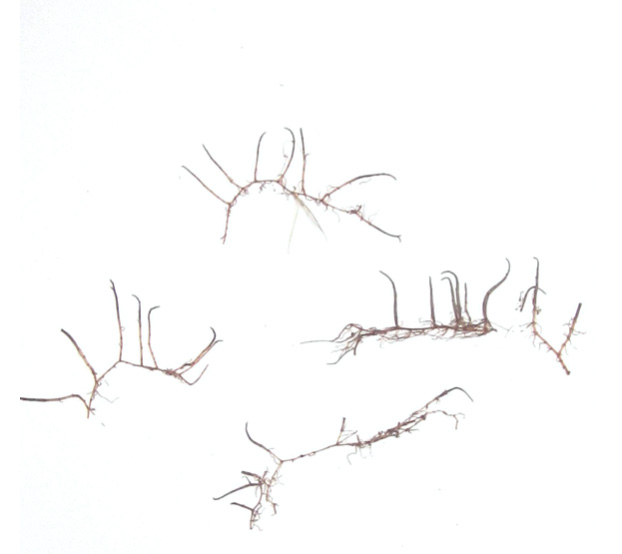
M. tenellum: Plant with inflorescence
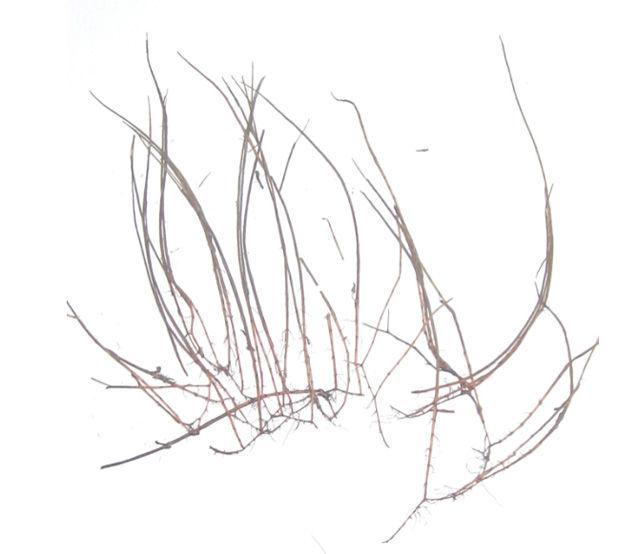
M. tenellum: Upper Danforth Pond
Diagnostic characteristics:
- Lacks distinct leaves
- Rhizomatous, grows in a distinct line producing non-flowering spike-like stems
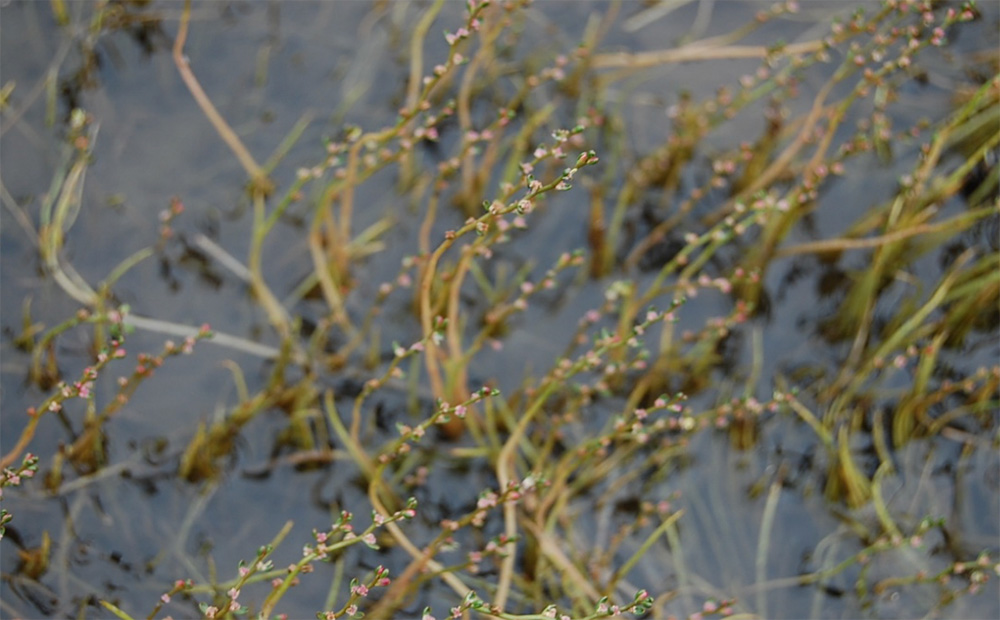
M. tenellum: Flowering Plant
5. EURASIAN WATER-MILFOIL, Myriophyllum spicatum.
Exotic and invasive in New Hampshire . As of 2018, Eurasian watermilfoil is not known in Ossipee Lake. It is important that everyone knows the diagnostic characteristics of this aggressive species. It is frequently said that M. spicatum only grows in alkaline waters but it is known to occur in acidic waters where it co-exists with variable water-milfoil. Here Eurasian water-milfoil often out-competes the variable water-milfoil.
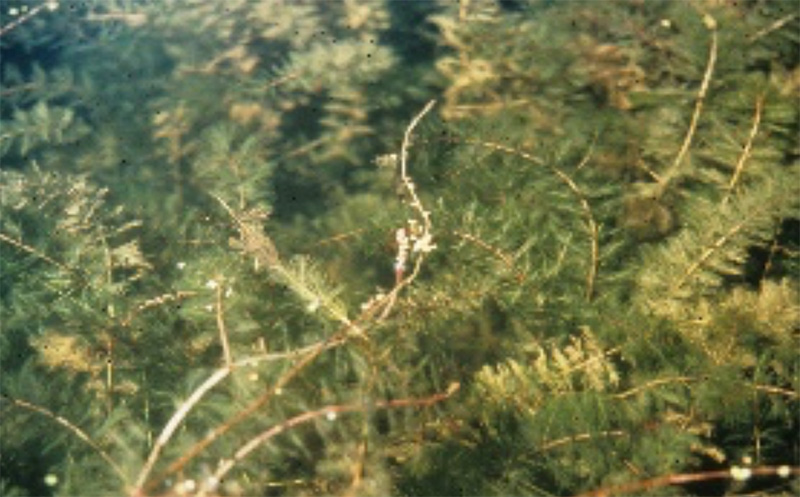
M. tenellum: Fertile Plant
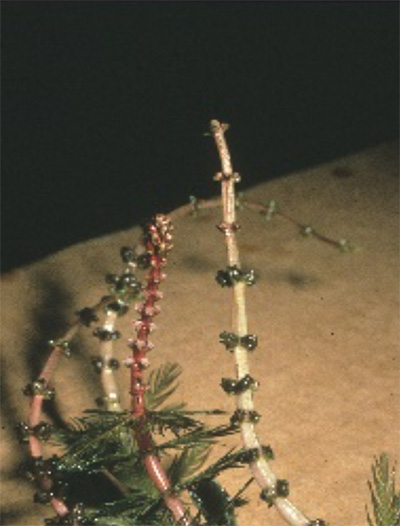
M. spicatum.: Inflorescence. Photo L Mehrhoff
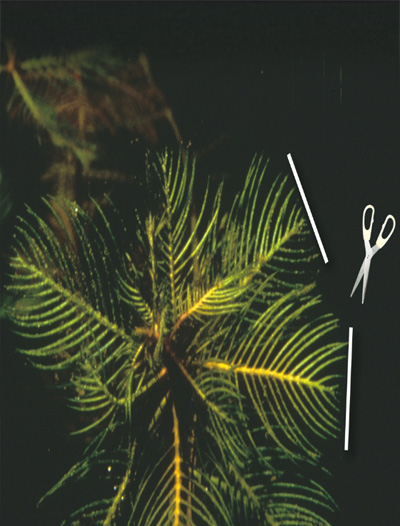
M. spicatum.: Flattened leaf tips. Photo H. Crosson
Diagnostic characteristics:
- Leaves are all whorled and widely spaced along the stem
- Stem usually white to pinkish
- Each leaf has many leaf segments (>12) along its central axis
- Inflorescence is emergent and lacks distinct bracts below the flowers
- When stems are held out of the water, the leaves fall flat along the stem like shingles as opposed to staying at right angles along the stem.
- The leaves along the stem give plants a flattened appearance from a distance as opposed to a cord-like appearance (like M. heterophyllum).
- Best characteristic is leaves along the mid-stem are flat-topped, looking like they were clipped with scissors
6. MERMAID-WEED, Proserpinaca palustris.
Native to New Hampshire. Marsh mermaid-weed is not common in the Ossipee Lake system. Only three sites have been discovered in over 45 years, two are present today, in the upper Pine River and in Indian Mound Cove. Plants are both aquatic and somewhat terrestrial with highly dissected leaves that resemble the water-milfoils.
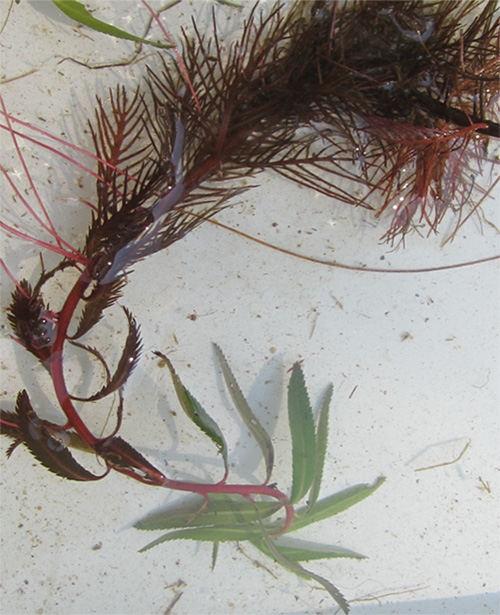
P. palustris. Note submersed leaves. Indian Mound Cove.
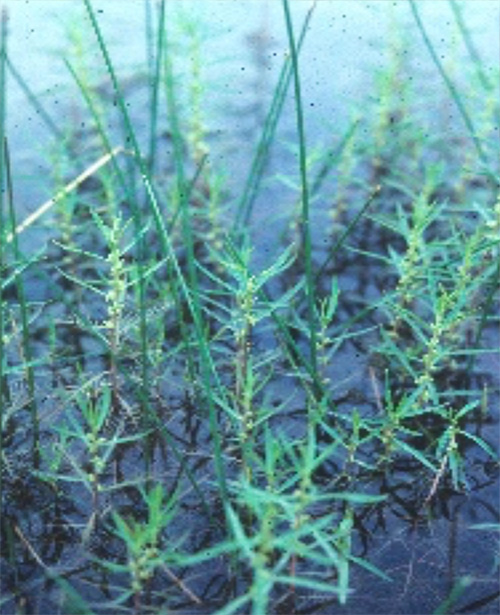
P. palustris.: Emergent leaves
Diagnostic characteristics:
- Submersed leaves are stiffer than most watermilfoils with 7-14 segments
- Emergent bracts are large and leaf-like
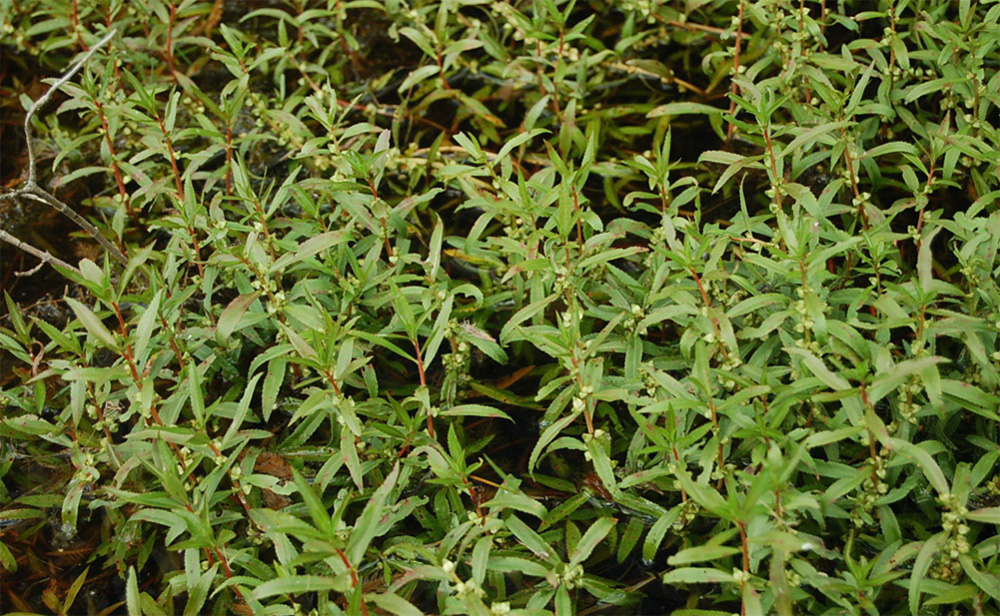
P. palustris.: Fertile population, Upper Pine River
7. COMB-LEAVED MERMAID-WEED, Proserpinaca pectinata.
Native to New Hampshire. Native to New Hampshire. This species has not been seen at Ossipee Lake since the late 1970s. It was found submersed along the shore of Broad Bay and emergent on the peat mat that used to be found at Long Sands along the south end of the lake. This species may be expected along the few remaining peaty shores and sedge mats.
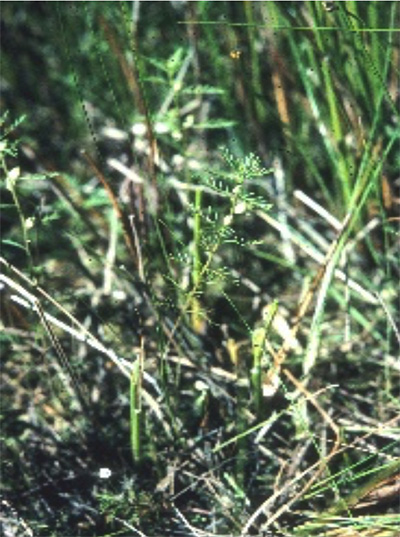
P. pectinata.: Fertile plant, terrestrial on Ossipee Lake Lone Pine Beach, peat mat.1978
Diagnostic characteristics:
- Mainly emergent
- Leaves mainly with 6-9 segments lacking terrestrial bract-like leaves
